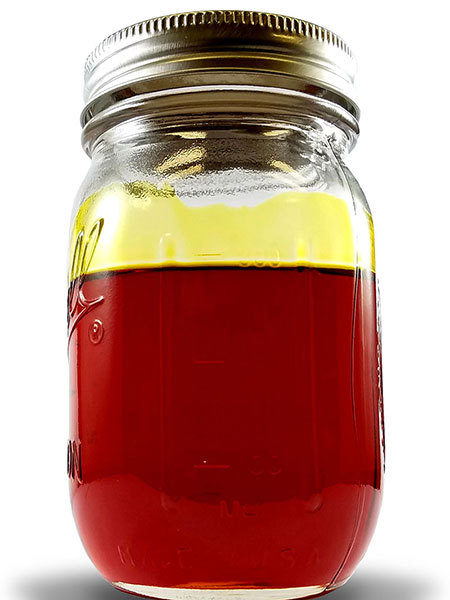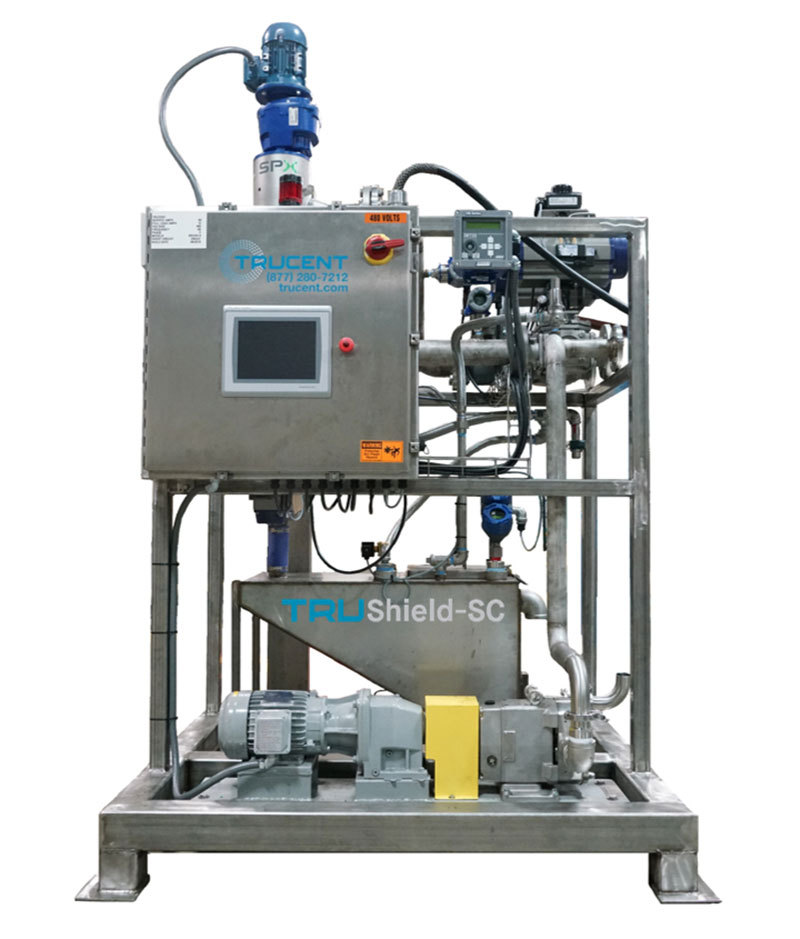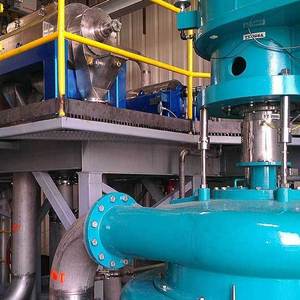Capitalizing on Corn Oil




PHOTO: FLUID QUIP TECHNOLOGIES
June 4, 2021
BY Lisa Gibson
When Carbon Green BioEnergy, in Lake Odessa, Michigan, started investing in enhanced corn oil extraction in 2017, corn oil prices were good. In 2019, when the systems were up and running, prices were still fine. But now, they’re great.
“We’ve really realized the benefits this year, with everything coming together,” says Ed Thomas, plant manager at Carbon Green BioEnergy. With corn oil prices above 50 cents per pound and thriving local animal feed markets, corn oil has become a large portion of revenue, Thomas says. And it comes at a crucial time.
“We went through a long period of time where plants are slowing down due to netbacks and market pressure on ethanol,” Thomas says. “And this has been one of the items you can look at and say, ‘Hey this is doing well for us.’”
As the pandemic thrashed the ethanol industry, diversification became even more crucial. Soaring corn oil prices, attributable in large part to widespread renewable diesel development, rings loudly as an opportunity to make up losses. Technology developers have taken notice and emphasized shorter returns on investment with high revenue potential.
“That’s a good strategy for plants to look at—take advantage of technology when it presents a decent ROI to you,” says Keith Jakel, Fluid Quip Technologies sales and marketing manager. “Maybe those who didn’t take advantage of the alcohol play can take advantage of this.
“At the end of the day, we’re all about plants diversifying revenue.”
Extraction Investment
Carbon Green BioEnergy has partnered with Trucent to increase its oil extraction. The key, Thomas says, is to create redundancies in the process: two pretreatment skids, two centrifuges, redundant syrup return system. “So you can lose a part, or plan maintenance, but still continue to work.
“We put a big focus on retention time in the system—increasing retention time,” Thomas says. “And also put a process focus on how the extraction additives were injected. We added a mixing chamber and things of that nature.”
The pretreatment skid reduces the particle size of material going into skids. “Essentially, you’re trying to get rid of the boulders running through the plant,” Thomas says. “We found that it increased the oil production. We also found that it helped the units stay cleaner.
“We found some of the changes we made got us a little more of a level playing ground, so to speak.”
Carbon Green BioEnergy also has upgraded extraction additives. All in all, Thomas says corn oil yield averages about 0.85 pounds per bushel, fluctuating between 0.7 and 0.9. “I wouldn’t consider that an industry leader, but regionally, because of the differences in fat content coming in in corn, that’s a good number from our experience.
“We’re a northern plant so, traditionally, we see a lower oil content, fat content in the corn supply. It’s a regional difference.”
Thomas says Carbon Green BioEneryg isn’t the only producer capitalizing on high oil prices. “I know that there’s definitely a focus on adding centrifuges, and again we feel that there’s a lot of benefit in that reduced downtime if you do have maintenance due to redundancy. Doubling up on centrifuges helps split the stream uniformly, to avoid overworking the equipment.
“You are gaining some efficiencies by just not trying to max throughput through the unit.”
Price Prediction
“We predicted this,” says Kevin Moore, vice president of advanced separations at Trucent, of soaring corn oil prices. “There is great demand for vegetable oils as a feedstock for renewable diesel. And corn oil is a great feedstock for that because it’s got a great CI (carbon intensity).
“We’ve got a unique place in the industry,” Moore adds. “We consider it our mission to help ethanol producers extract as much corn oil as possible.”
Trucent focuses on equipment, chemistry and service, Moore says. “We think there is opportunity for certain customers to add more centrifuges, which will help output. It allows more capacity and it’s really been helped by rising prices. ROIs are better.”
The Tru-Shield screen also helps condition syrup in front of the centrifuge, he says, and lowers viscosity for easier separation. “We see anywhere from a 5 to 10% improvement in oil output with the placement of our Tru-Shield in front of centrifuges.”
The chemistry component is tailored. “We’ve found that no one formula, no one chemistry is universal. We work closely with our customers to optimize our chemistry formulation to extract the most oil.”
“On the service side, we’ve got a long history of being able to do material balances, being able to analyze oil content in all of the ethanol screens.”
Moore has seen an increase in plants investing in corn oil extraction as prices have risen. “We have found, particularly as ethanol plants have debottlenecked their facilities to get increased output, customers that started with one centrifuge can justify the addition of a second. Those with two can justify a third, particularly because oil values are so high.
“Typically, we’ve been in the one-year-and-less payback period, and obviously with values now almost doubled, we cut the payback times in half.”
Renewed Relevancy
With similar, substantial cuts to ROI, Fluid Quip Technologies has renewed focus on its Brix Oil Separation system. The process includes a clarifier, fiber separation and polisher. It’s three pieces of equipment placed in the optimal location for each plant.
BOS was originally designed as a workaround of the GS CleanTech Corp. patent lawsuit, where CleanTech sued ethanol producers for patent infringement on dry mill corn oil extraction. The suit was filed in 2009 and a district court ruled in 2016 that the patents were unenforceable. CleanTech in 2018 filed an appeal with the U.S. court of Appeals for the Federal Circuit, which was denied, and petitioned the court for a rehearing en banc in April 2020, which was also denied. The company in November 2020 petitioned the Supreme Court to review the case. That petition was denied in February 2021.
Meanwhile, BOS initially had an ROI of between four and six years with 20-cent corn oil, Jakel says. “Which is not a bad return in most industries. However, this is not viewed as favorable in the ethanol industry.” With 40-cent oil, that ROI shrinks to two years.
“It’s an opportunistic play because of where the prices of oil are. We normally would not employ this type of technology because it doesn’t have a good ROI.
“This is another opportunity that a plant could look at to take advantage of something that might be available. Each plant has to weigh out how long they anticipate that market to be around. We think it’ll be around at least two years for that ROI. Once you pay back for the system, then it’s just easy cash in your pocket, no matter where you’re at on oil.”
Fluid Quip’s process doesn’t use any chemicals, he adds. “That’s a big part of it. It keeps OPEX costs at a minimum. When you introduce chemicals, you have an uncontrolled OPEX cost.”
Any oil price above 40 cents is a great ROI for BOS, Jakel says. “It actually has some relevancy now.”
Moore and Jakel agree that a plant’s oil separation system should be tailored. “Every plant is unique and we know there are changes in corn profiles across the country,” Jakel says. “Some regions have lower or higher oil, depending on where you’re at. So that also has to be taken into consideration.”
And Moore says there’s still time to tailor an enhanced oil extraction process. As enormous renewable diesel projects announced in the past few years start operating, corn oil will continue to be favored as a feedstock, he predicts. “Much more is coming online.
“This is something the industry has been talking about for a while. The prediction on the demand side is coming to fruition and we’re of the opinion that it’s just getting started.”
Author: Lisa Gibson
Editor, Ethanol Producer Magazine
701.738.4920
lgibson@bbiinternational.com
Published in July 2021 issue of Ethanol Producer Magazine
Advertisement
Advertisement
Related Stories
CoBank latest quarterly research report highlights current challenges facing the biobased diesel industry. The report cites policy uncertainty and trade disruptions due to tariff disputes as factors impacting biofuel producers.
The U.S. EIA on April 15 released its Annual Energy Outlook 2025, which includes energy trend projections through 2050. The U.S. DOE, however, is cautioning that the forecasts do not reflect the Trump administration’s energy policy changes.
The Michigan Advanced Biofuels Coalition and Green Marine are partnering to accelerating adoption of sustainable biofuels to improve air quality and reduce GHG emissions in Michigan and across the Great Lakes and St. Lawrence Seaway.
EIA reduces production forecasts for biobased diesel, increases forecast for other fuels, including SAF
The U.S. Energy Information Administration reduced its 2025 forecasts for renewable diesel and biodiesel in its latest Short-Term Energy Outlook, released April 10. The outlook for “other biofuel” production, which includes SAF, was raised.
FutureFuel Corp. on March 26 announced the restart of its 59 MMgy biodiesel plant in Batesville, Arkansas. The company’s annual report, released April 4, indicates biodiesel production was down 24% last year when compared to 2023.
Upcoming Events










